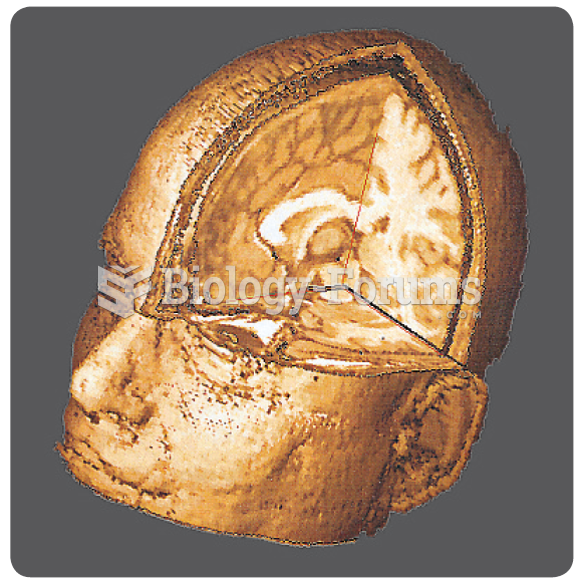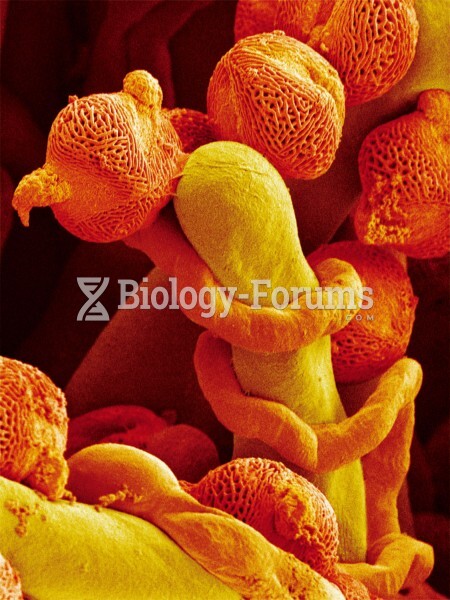|
|
|
The use of salicylates dates back 2,500 years to Hippocrates’s recommendation of willow bark (from which a salicylate is derived) as an aid to the pains of childbirth. However, overdosage of salicylates can harm body fluids, electrolytes, the CNS, the GI tract, the ears, the lungs, the blood, the liver, and the kidneys and cause coma or death.
It is difficult to obtain enough calcium without consuming milk or other dairy foods.
There are over 65,000 known species of protozoa. About 10,000 species are parasitic.
Approximately 15–25% of recognized pregnancies end in miscarriage. However, many miscarriages often occur before a woman even knows she is pregnant.
Dogs have been used in studies to detect various cancers in human subjects. They have been trained to sniff breath samples from humans that were collected by having them breathe into special tubes. These people included 55 lung cancer patients, 31 breast cancer patients, and 83 cancer-free patients. The dogs detected 54 of the 55 lung cancer patients as having cancer, detected 28 of the 31 breast cancer patients, and gave only three false-positive results (detecting cancer in people who didn't have it).
 GI series. (a) Upper GI series begins with a barium swallow, barium shake, or barium meal. (b) Lower
GI series. (a) Upper GI series begins with a barium swallow, barium shake, or barium meal. (b) Lower
 Typical ignition timing map developed from testing and used by the vehicle computer to provide the ...
Typical ignition timing map developed from testing and used by the vehicle computer to provide the ...





